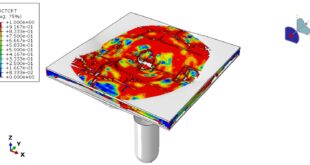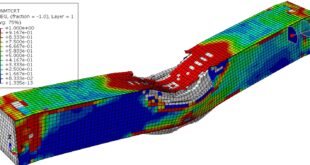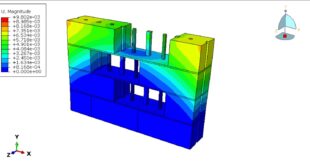In this tutorial, the Simulation dynamic tensile test of an aluminum piece by using ductile, shear, and MSFLD damage criterion in Abaqus has been studied. The aluminum part is modeled as a three-dimensional solid part. You can see a figure of the assembled below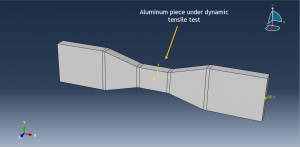
The aluminum alloys may fail due to one or a combination of the following failure mechanisms. ductile failure due to nucleation, growth, and coalescence of voids; shear failure due to fracture within shear bands; and failure due to necking instabilities.Abaqus/Explicit offers a number of damage initiation criteria to model the onset of necking instabilities. The ductile criterion is a phenomenological model for predicting the onset of damage due to nucleation, growth, and coalescence of voids. The shear criterion is a phenomenological model for predicting the onset of damage due to shear band localization. The MSFLD damage criterion is appropriate for the aluminum piece especially aluminum sheets. A combination of those damage criterion can reflect a good result of the aluminum failure. The dynamic explicit step with mass-scale technique to make stability in the model and decrease the time of the simulation are used. The fixed boundary condition is assigned to one side of the aluminum part and displacement with a smooth amplitude to the other side. The mesh should be so fine in the middle of the part because of the failure zone
After the simulation, all results such as stress, strain, ductile and shear damage, failure, and … are available. You can see some figures for the results below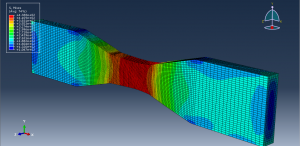
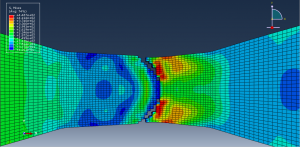
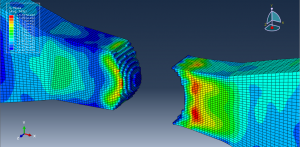
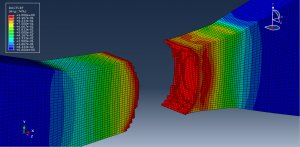
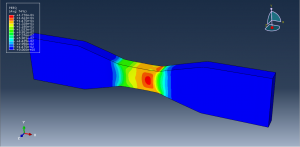
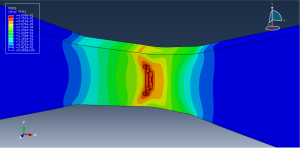
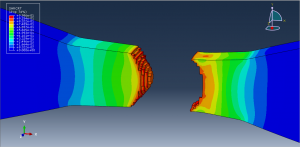
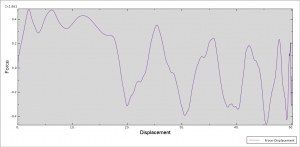
You can provide CAE ,INP,and English video files of this simulation here. The cost of these files is Twenty-Six Euros. you can click on the bellow bottom to beginning process
You can purchase the tutorial through a PayPal account, a Visa, or a Master card, just before payment,send me an email to this address: karampourp@gmail.com
 Abaqus tutorials Abaqus tutorials
Abaqus tutorials Abaqus tutorials
